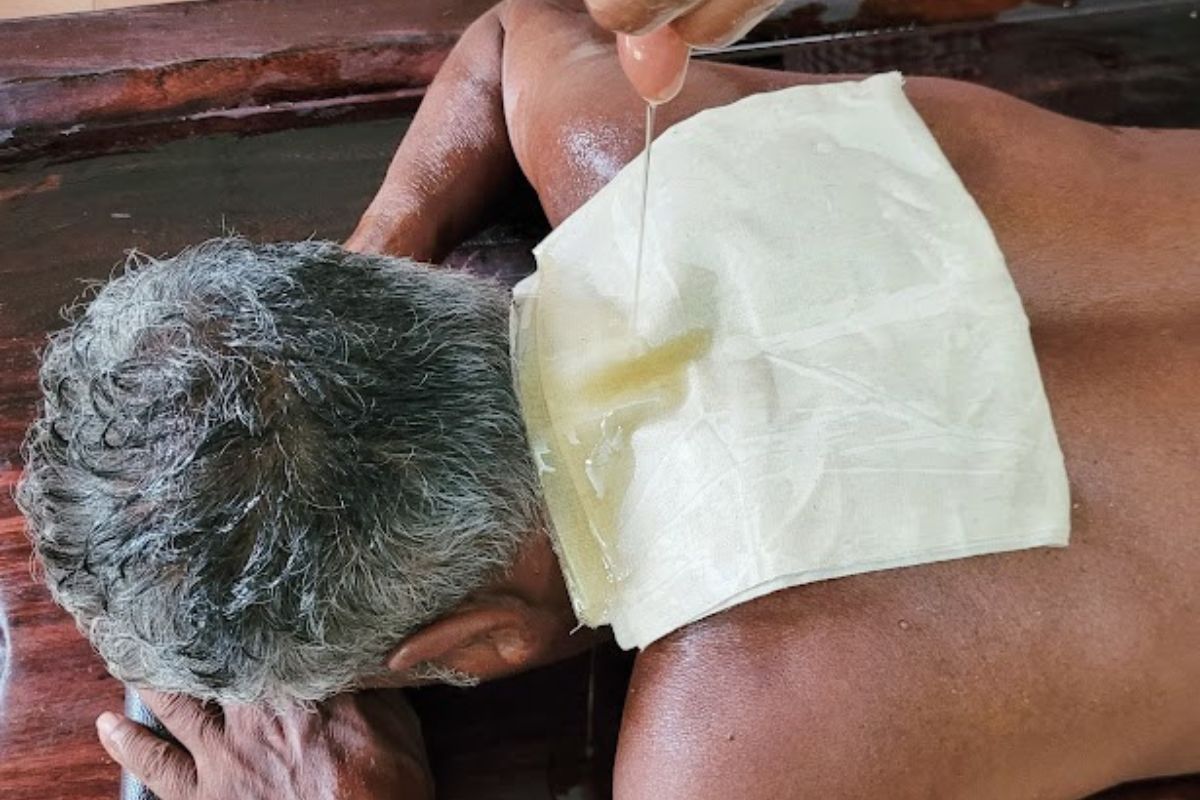Overview
Cervical spondylosis or Cervical radiculopathy shows compression of a nerve root which occurs when a disc prolapse laterally which is due to osteophytic encroachment of the intervertebral foramina presenting the features of neck pain that may radiate in the distribution of the affected nerve root can be paralleled with viswachi.
It is universally accepted that radicular symptoms in the arm usually indicate nerve root entrapment secondary to a paracervical disc protrusion or in the older population to the foraminal bony hypertrophy. Nerve root pain may be very distressing and is often compatible with manual or office work for a variable period of time, depending upon the pathology.
Cervical spondylosis, commonly called arthritis of the neck, is the medical term for these age-related, wear-and-tear changes that occur over time. Cervical spondylosis is extremely common. More than 85 percent of people over the age of 60 are affected. The condition most often causes pain and stiffness in the neck—although many people with cervical spondylosis experience no noticeable symptoms. In most cases, cervical spondylosis responds well to conservative treatment that includes medication and physical therapy. Viswachi is a disease which exhibits weakness or sensational disturbances, disturbances of movements of the hand.
Viswachi shows close resemblance with that of Apabahuka. This condition may be differentiated from that of Apabahuka by the typical presentation of pain radiating from the upper arm to forearm and palms. Also it is distributed from the back of the neck to the tip of fingers. Contrary to this, the pain in apabahuka does not radiate. The pain is more or less restricted to the Scapular region (amsa pradesha). It is also called Greeva graha when the pain is limited to neck and presents with severe stiffness.
Symptoms
- Bahuprushta arabhyamangulinam (Radiating pain from cervical region to shoulder down to the arm.
- Ruja(Pain).
- Bhavo prasarana akunchanadi karma kshyakari( Difficulty in movements of the arm).
- Numbness.
- Weakness.
- Tenderness over cervical region.
Risk Factors
Factors that may increase your risk of rheumatoid arthritis include:
- Age: Cervical spondylosis is a normal part of aging.
- Occupation: Jobs that involve repetitive neck motions, awkward positioning or a lot of overhead work put extra stress on your neck.
- Neck injuries.
- Genetic factors.
- Smoking.
Types
A. Three clinical syndromes:
- Cervical Radiculopathy
- Cervical Myelopathy
- Axial Joint Pain
B. According to Ayurveda 2 types are there:
- Vata predominance – Pain will be more in this condition.
- Vata Kapha predominance – Along with pain, numbness, weakness, and loss of appetite will be present.
Investigations
- Neck X–ray: An X–ray may show abnormalities, such as bone spurs, that indicate cervical spondylosis.
- Computerized tomography(CT Scan): It can provide much finer details than a plain x–ray, particularly of the bones.
- Magnetic resonance imaging(MRI): cross sectional images of both bone and soft tissues. This can help pinpoint areas where nerves may be getting pinched.
- Myelogram: Thedye makes areas of spine more visible.
Causes
Aharaja Nidana causing vishwachi:
- Abhojana(Excessive Fasting)
- Alpasana(Consuming less amount of food)
- Vishamashana(Untimely and delayed consumption, should be considered which leads to vitiation of agni resulting into formation of ama.
- And it is explained that ama is one of the major factors in pathogenesis of many disease and viswachi.
- Adhyasana(Taking food before digestion of previous food)
- Vishtambhi Ahara(Vishtambhi foods leads to vibhandha)
- Shimbi dhanya
- Taruna dhanya
- Ruksha ahara
- Laghuguna ahara
- Kashaya dravya
- Katu dravya
- Tiktha dravya
- Sheeta ahara
Viharaja Nidan causing viswachi:
- Dukha asana and Dukhashayya(Improper sitting and sleeping posture)
- Vegadharana and vegaudeerana( Suppressing natural urges)
- Rathrijagarana(Late night sleep).
- Ativyayama (Excessive exercise)
- Ativyavaya(Excessive indulgence in sex)
- Ratha ati charya (Excessive vehicle riding)
Diagnosis & Treatment
When you consult an Ayurveda physician with symptoms of cervical spondylosis they will examine your case in detail. They will inquire about any risk factors in your life and will take a stock of your life to know if you have been knowingly or unknowingly doing any of the causative factors. They will also examine your affected joint to understand more about the degree of progress of cervical spondylosis before coming to a decision about the management.
Any treatment for cervical spondylosis should aim at preserving the functionality of the joints. This is achieved by preventing further destruction of the joint, keeping the inflammation and the associated symptoms like pain and stiffness under control and to the minimum, to achieve the maximal range of joint mobility and to stop the development of deformities and complications.

Allopathic management of cervical spondylosis are medication, therapy and surgery.
- Medication: Non steroidal anti-inflammatory drugs, corticosteroids, muscle relaxants, anti-seizure medications and antidepressants.
- Physiotherapy helps to strengthen the muscles in neck and shoulders & Traction which can help provide more space within the spine if nerve roots are being pinched.
- Weakness in your arms or legs worsen surgery is the next option:
- Removing a herniated disc or bone spurs.
- Removing part of a vertebra.
- Fusing a segment of the neck using bone graft and hardware.
In comparison, the Ayurvedic approach is holistic, consisting of diet modifications, lifestyle changes, stress management, herbal medication and Ayurvedic therapies, Yoga asanas, pranayama and meditation. All of these together can help the body get back to a state of balance. The approach is effective in a majority of patients.
Medicines for Ayurveda: Ayurveda has a rich tradition of plant pharmacotherapy with a great variety of anti-arthritic plants believed to reduce inflammation, remove impurities, and balance the doshas that cause cervical spondylosis. In Ayurvedic treatment, the selection and dosage of medicines are specific to the patient and will depend on which of the three doshas are out of balance.
Ayurveda Therapies: Panchakarma: The traditional treatment system to balance doshas involves five therapies: therapeutic vomiting (Vamana), therapeutic purgation (Virechana), medicated enema (vasthi), nasal administration of medicines(nasya), and blood purification(rakta mokshana). If the patient is strong enough to undergo such treatments, they can undergo the ones that are most suitable for them.
Ayurvedic treatment for cervical spondylosis is much more than panchakarma. It also includes herbal medicines, medicated oil therapies, and analgesic pastes.
Oil therapies are known to increase the mobility of the joints, relieve muscular spasm, and push accumulated toxins into the large intestine, ready for elimination. Oil therapies like abhyangam oleates the body, whereas others like pizhichil, potalis or kizhis combine both oleation and sudation techniques to improve mobility and flexibility of joint, reduce pain and inflammation, and improve the day today life of the patient. Lepam or analgesic pastes are used to reduce swelling and inflammation at the site.
In Cervical spondylosis especially doing Kizhi (Hot fomentation with potalis with vatahara dravyas. Sirovasthi (Medicated oil is held in place using a bandage tied around the patient’s head and an open head cap). Nasyam (Nasal administration of medicated oils). Pichu (Placing warm oil pad on neck for a particular time).
Diet : A light vegetarian diet is recommended, with avoidance of foods known to trigger painful disease activity (e.g., the “nightshade” vegetables such as potato and eggplant).To be avoided gassy vegetables like potatoes, mushroom, cauliflower, cabbage, sour fruits, oily and spicy foods, deep fry foods, yogurt, Refined flour (Maida), Tuvar dal.
Lifestyle:Rest during the active disease phase, and mild physical activities like yoga is advised as the healing of the affected joints improve. Pranayama & meditation are advocated to improve calmness of mind and for better management of pain.
Ayurveda offers a holistic, historically rooted, reportedly safe, alternative treatment for Arthritis.
At Saranya, we believe in the old school application of Ayurveda wisdom with a modern approach rooted in evidence based practise. The medicines and therapies are fixed only after individual consultation through listening, understanding the need and analyzing the root cause. We incorporate different diagnostic methodologies in identifying the root cause of pain and plan unique customized treatment strategies to eliminate the causes.
We believe in restoring the quality of life by relieving the hardships and pain of those who suffer from arthritis.
References: Ashtanga Hridaya, Charaka Samhita, Sushrutha Samhita.

